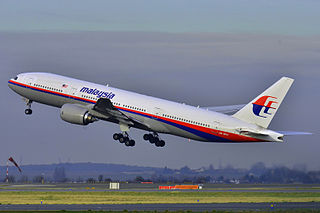The unconscious mind consists of processes in the mind that occur automatically and are not available to introspection. Although these processes exist beneath the surface of conscious awareness, they are thought to exert an effect on conscious thought processes and behavior. Empirical evidence suggests that unconscious phenomena include repressed feelings and desires, memories, automatic skills, subliminal perceptions, and automatic reactions. The term was coined by the 18th-century German Romantic philosopher Friedrich Schelling and later introduced into English by the poet and essayist Samuel Taylor Coleridge.
Psychoanalytic theory is the theory of personality organization and the dynamics of personality development relating to the practice of psychoanalysis, a clinical method for treating psychopathology. First laid out by Sigmund Freud in the late 19th century, psychoanalytic theory has undergone many refinements since his work. The psychoanalytic theory came to full prominence in the last third of the twentieth century as part of the flow of critical discourse regarding psychological treatments after the 1960s, long after Freud's death in 1939. Freud had ceased his analysis of the brain and his physiological studies and shifted his focus to the study of the psyche, and on treatment using free association and the phenomena of transference. His study emphasized the recognition of childhood events that could influence the mental functioning of adults. His examination of the genetic and then the developmental aspects gave the psychoanalytic theory its characteristics. Starting with his publication of The Interpretation of Dreams in 1899, his theories began to gain prominence.
Germanwings GmbH was a German low-cost airline wholly owned by Lufthansa which operated under the Eurowings brand. It was based in Cologne with hubs at Cologne Bonn Airport, Stuttgart Airport, Hamburg Airport, Berlin Tegel Airport, Munich Airport and further bases at Hannover Airport and Dortmund Airport.
In Freudian psychology, psychosexual development is a central element of the psychoanalytic sexual drive theory. Freud believed that personality developed through a series of childhood stages in which pleasure seeking energies from the child became focused on certain erogenous areas. An erogenous zone is characterized as an area of the body that is particularly sensitive to stimulation. The five psychosexual stages are the oral, the anal, the phallic, the latent, and the genital. The erogenous zone associated with each stage serves as a source of pleasure. Being unsatisfied at any particular stage can result in fixation. On the other hand, being satisfied can result in a healthy personality. Sigmund Freud proposed that if the child experienced frustration at any of the psychosexual developmental stages, they would experience anxiety that would persist into adulthood as a neurosis, a functional mental disorder.

Miles O'Brien is an independent American broadcast news journalist specializing in science, technology, and aerospace who has been serving as national science correspondent for PBS NewsHour since 2010.

The two-man rule is a control mechanism designed to achieve a high level of security for especially critical material or operations. Under this rule, access and actions require the presence of two or more authorized people at all times.

Freudo-Marxism is a loose designation for philosophical perspectives informed by both the Marxist philosophy of Karl Marx and the psychoanalytic theory of Sigmund Freud. It has a rich history within continental philosophy, beginning in the 1920s and 1930s and running since through critical theory, Lacanian psychoanalysis, and post-structuralism.
A cognitive module in cognitive psychology is a specialized tool or sub-unit that can be used by other parts to resolve cognitive tasks. It is used in theories of the modularity of mind and the closely related society of mind theory and was developed by Jerry Fodor. It became better known throughout cognitive psychology by means of his book, The Modularity of Mind (1983). The nine aspects he lists that make up a mental module are domain specificity, mandatory operation, limited central accessibility, fast processing, informational encapsulation,‘shallow’ outputs, fixed neural architecture, characteristic and specific breakdown patterns, and characteristic ontogenetic pace and sequencing. Not all of these are necessary for the unit to be considered a module, but they serve as general parameters.

The Oedipus complex is an idea in psychoanalytic theory. The complex is an ostensibly universal phase in the life of a young boy in which, to try to immediately satisfy basic desires, he unconsciously wishes to have sex with his mother and disdains his father for having sex and being satisfied before him. Sigmund Freud introduced the idea in The Interpretation of Dreams (1899), and coined the term in his paper A Special Type of Choice of Object made by Men (1910).

Dalkurd Fotbollsförening, commonly known as Dalkurd FF or simply Dalkurd is a Swedish football club based in Uppsala. The club plays in the Ettan Norra, which is the third tier of football in the country. On 26 September 2004, the club was originally founded by members of the Kurdish diaspora in Borlänge, Dalarna.

Cara Louise Santa Maria is an American science communicator. She hosts the podcast Talk Nerdy and co-hosts The Skeptics' Guide to the Universe podcast, and was a co-host of TechKnow on Al Jazeera America.

Sigmund Freud is considered to be the founder of the psychodynamic approach to psychology, which looks to unconscious drives to explain human behavior. Freud believed that the mind is responsible for both conscious and unconscious decisions that it makes on the basis of psychological drives. The id, ego, and super-ego are three aspects of the mind Freud believed to comprise a person's personality. Freud believed people are "simply actors in the drama of [their] own minds, pushed by desire, pulled by coincidence. Underneath the surface, our personalities represent the power struggle going on deep within us".

LAM Mozambique Airlines Flight 470 was a scheduled international passenger flight from Maputo, Mozambique, to Luanda, Angola. On 29 November 2013, the Embraer E190 twinjet operating the service crashed into the Bwabwata National Park in Namibia, halfway through its flight, killing all 27 passengers and 6 crew on board.

Malaysia Airlines Flight 370 (MH370/MAS370) was an international passenger flight operated by Malaysia Airlines that disappeared on 8 March 2014 while flying from Kuala Lumpur International Airport in Malaysia to its planned destination, Beijing Capital International Airport. The crew of the Boeing 777-200ER registered as 9M-MRO, last communicated with air traffic control (ATC) around 38 minutes after takeoff when the flight was over the South China Sea. The aircraft was lost from ATC radar screens minutes later, but was tracked by military radar for another hour, deviating westward from its planned flight path, crossing the Malay Peninsula and Andaman Sea. It left radar range 200 nautical miles northwest of Penang Island in northwestern Peninsular Malaysia.
Malaysia Airlines Flight 370 disappeared on 8 March 2014, after departing from Kuala Lumpur for Beijing, with 227 passengers and 12 crew members on board. Malaysia's former Prime Minister, Najib Razak, stated that the aircraft's flight ended somewhere in the Indian Ocean, but no further explanation had been given. Despite searches finding debris considered with strong certainty to originate from the crash, official announcements were questioned by many critics, and several theories about the disappearance were proposed. Some of these theories were described as conspiracy theories.

Germanwings Flight 9525 was a scheduled international passenger flight from Barcelona–El Prat Airport in Spain to Düsseldorf Airport in Germany. The flight was operated by Germanwings, a low-cost carrier owned by the German airline Lufthansa. On 24 March 2015, the aircraft, an Airbus A320-211, crashed 100 km north-west of Nice in the French Alps. All 144 passengers and all six crew members were killed. It was the only fatal crash involving a Germanwings aircraft during the company's 18 years in operation.

Suicide by pilot is an aviation event in which a pilot deliberately crashes or attempts to crash an aircraft in a suicide attempt, sometimes to kill passengers on board or people on the ground. This is sometimes described as a murder–suicide. It is suspected as being a possible cause of the crashes of several commercial flights and is confirmed as the cause in others. Generally, it is difficult for crash investigators to determine the motives of the pilots, since they sometimes act deliberately to turn off recording devices or otherwise hinder future investigations. As a result, pilot suicide can be difficult to prove with certainty.

Mental health in aviation is a major concern among airlines, regulators, and passengers. This topic gained more attention after the 2015 Germanwings crash, which was deliberately caused by the plane's copilot. Little data exists on mental health in aviation, but steps to gather relevant information and provide better solutions are underway.

Culture can affect aviation safety through its effect on how the flight crew deals with difficult situations; cultures with lower power distances and higher levels of individuality can result in better aviation safety outcomes. In higher power cultures subordinates are less likely to question their superiors. The crash of Korean Air Flight 801 in 1997 was attributed to the pilot's decision to land despite the junior officer's disagreement, while the crash of Avianca Flight 52 was caused by the failure to communicate critical low-fuel data between pilots and controllers, and by the failure of the controllers to ask the pilots if they were declaring an emergency and assist the pilots in landing the aircraft. The crashes have been blamed on aspects of the national cultures of the crews.

MH370: The Plane That Disappeared is a British docuseries released on Netflix and directed by Louise Malkinson about the 2014 disappearance of Malaysia Airlines Flight 370.














